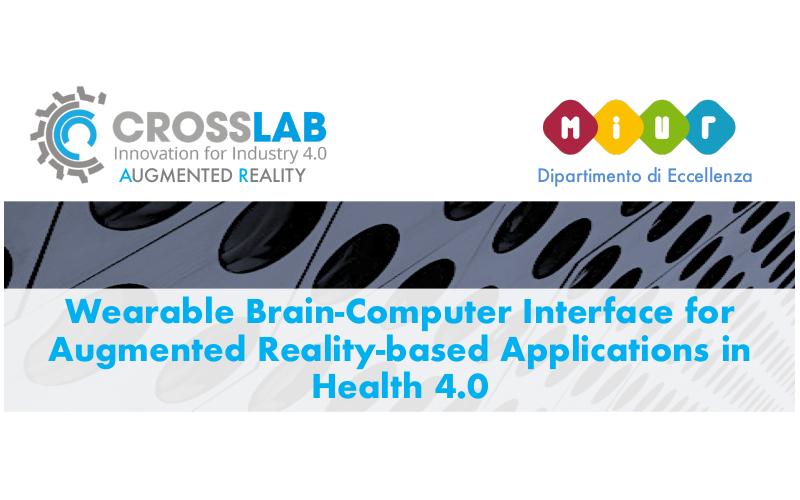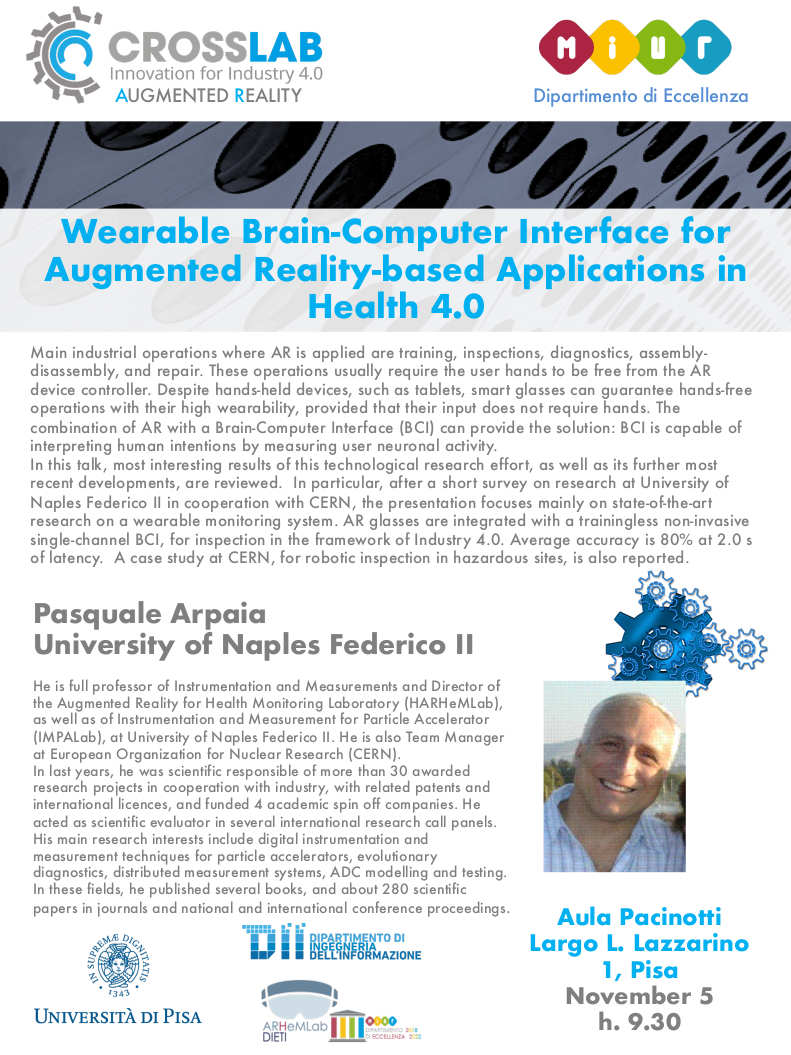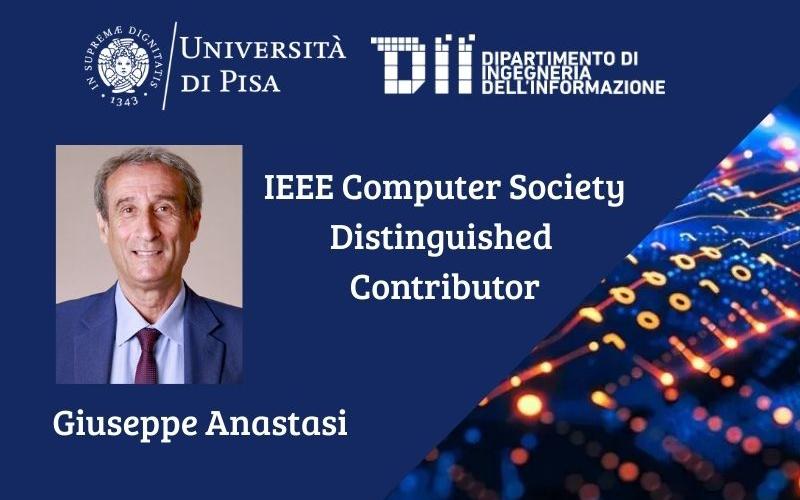La nomina a Distinguished Contributor (DC) premia i membri e gli affiliati della Computer Society che hanno apportato contributi tecnici significativi e continuativi alla IEEE Computer Society, alla...
Leggi tutto[CrossLab Talks] Wearable Brain-Computer Interface for Augmented Reality-based Applications in Health 4.0

5 November
h 9.30
Aula Pacinotti
Largo L. Lazzarino 1, Pisa
Abstract
Main industrial operations where AR is applied are training, inspections, diagnostics, assembly-disassembly, and repair. These operations usually require the user hands to be free from the AR device controller. Despite hands-held devices, such as tablets, smart glasses can guarantee hands-free operations with their high wearability, provided that their input does not require hands. The combination of AR with a Brain-Computer Interface (BCI) can provide the solution: BCI is capable of interpreting human intentions by measuring user neuronal activity. In this talk, most interesting results of this technological research effort, as well as its further most recent developments, are reviewed. In particular, after a short survey on research at University of Naples Federico II in cooperation with CERN, the presentation focuses mainly on state-of-the-art research on a wearable monitoring system. AR glasses are integrated with a trainingless non-invasive single-channel BCI, for inspection in the framework of Industry 4.0. Average accuracy is 80% at 2.0 s of latency. A case study at CERN, for robotic inspection in hazardous sites, is also reported.
Bio
He is full professor of Instrumentation and Measurements and Director of the Augmented Reality for Health Monitoring Laboratory (HARHeMLab), as well as of Instrumentation and Measurement for Particle Accelerator (IMPALab), at University of Naples Federico II. He is also Team Manager at European Organization for Nuclear Research (CERN). In last years, he was scientific responsible of more than 30 awarded research projects in cooperation with industry, with related patents and international licences, and funded 4 academic spin off companies. He acted as scientific evaluator in several international research call panels. His main research interests include digital instrumentation and measurement techniques for particle accelerators, evolutionary diagnostics, distributed measurement systems, ADC modelling and testing. In these fields, he published several books, and about 280 scientific papers in journals and national and international conference proceedings.




